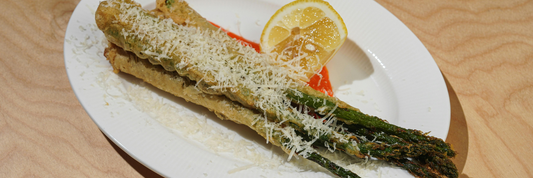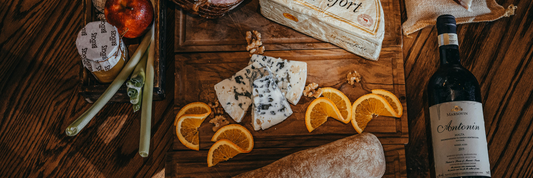When you’re running a sushi bar or a Japanese restaurant, creating a delicious sushi roll is only half the battle. The real challenge lies in determining how much does this roll actually cost you to make, and how can you price it to ensure long-term profit?
At Kimecopak, we understand that managing your food cost isn’t just about tracking numbers — it’s about building a sustainable business model that balances quality, cost control, and environmental responsibility. This guide walks you through every step of calculating food cost per sushi roll so you can maintain healthy profit margins while embracing eco-friendly packaging solutions.
-
What Is Sushi? Types of Sushi
-
What are The Most Popular Sushi Styles in Sushi Restaurant's Menu
-
Why Do Many Sushi Restaurants Fail After One Year? 5 Common Mistakes
Why Understanding Food Cost Is Crucial for Sushi Businesses

The Relationship Between Food Cost and Profitability
Your food cost percentage is calculated as:
(Total Ingredient Cost ÷ Menu Price) × 100%
Knowing the exact cost of each roll helps you:
-
Set profitable menu prices
-
Avoid underpricing high-cost items
-
Maintain consistent portion control
According to restaurant cost management experts, controlling recipe and food costs can improve profitability by up to 20–30%. (bepbackoffice.com)
The Unique Challenges of Sushi Costing
-
Sushi relies on premium, perishable ingredients like fish and seafood that fluctuate in price seasonally.
-
Ingredient yield after cleaning and trimming can vary widely — typically 60–70% for fish.
-
Average sushi restaurant food cost should stay between 28–35% of sales for stable profitability. (dojobusiness.com)
-
Eco-friendly packaging adds a small cost but creates higher perceived value — an advantage when aligned with a sustainability-focused brand like Kimecopak.
Step-by-Step Guide to Calculate Food Cost per Sushi Roll

1. Define the Recipe and Portion Size
Start with a standardized recipe for each roll. For example, a Salmon Avocado Roll might include:
-
100 g cooked sushi rice
-
40 g salmon
-
½ nori sheet
-
15 g avocado
-
Sauces and condiments
Standardizing recipes ensures consistency in both taste and cost.
2. Gather Ingredient Unit Costs
Get the supplier price for each ingredient and convert it into a per-gram or per-unit cost. For instance:
-
Salmon: US$18/kg
-
Sushi rice: US$1.20/kg
-
Avocado: US$2.00/kg
-
Nori: US$0.10 per sheet
3. Adjust for Yield and Waste
Always consider the yield — the usable portion after trimming or cooking.
-
Salmon yield: ~60%
-
Avocado yield: ~70%
-
Rice yield: ~95%
Formula:
Effective Cost = (Unit Price ÷ Yield)
Example: US$18/kg salmon with a 60% yield → effective cost = US$30/kg of usable salmon.
4. Calculate Total Ingredient Cost per Roll
| Ingredient | Quantity Used | Unit Price | Yield | Actual Cost |
|---|---|---|---|---|
| Salmon | 40 g | $18/kg | 60% | $1.20 |
| Rice | 100 g | $1.20/kg | 95% | $0.13 |
| Nori | ½ sheet | $0.10/sheet | 100% | $0.05 |
| Avocado | 15 g | $2.00/kg | 70% | $0.04 |
| Condiments | – | – | – | $0.15 |
| Total | – | – | – | $1.57 |
5. Determine Target Food Cost Percentage
If your target food cost is 30%, then:
Menu Price = Total Food Cost ÷ 0.30 = $1.57 ÷ 0.30 ≈ $5.23
This ensures that for every $1 spent on ingredients, you generate $3.33 in sales.
6. Set Your Menu Price
Round up for psychological pricing ($5.50 or $5.99).
Compare your price with market competitors and your overall brand positioning.
Example: Calculating Food Cost for a Salmon Avocado Roll
| Ingredient | Quantity | Unit Cost | Yield | Cost per Roll |
|---|---|---|---|---|
| Salmon | 40 g | $18/kg | 60% | $1.20 |
| Rice | 100 g | $1.20/kg | 95% | $0.13 |
| Nori | ½ sheet | $0.10/sheet | 100% | $0.05 |
| Avocado | 15 g | $2.00/kg | 70% | $0.04 |
| Condiments | – | – | – | $0.15 |
| Total Cost | – | – | – | $1.57 |
Cost Variance Scenarios
-
If salmon rises to $22/kg → food cost per roll ≈ $1.85
-
If yield drops to 50% → cost increases to $2.09
-
To maintain a 30% food cost, menu price should be adjusted to $6.30–$7.00
Regularly reviewing these figures helps you stay profitable even when ingredient prices change.
How to Maintain a Sustainable Profit Margin

Track Supplier Prices and Market Fluctuations
-
Maintain 2–3 reliable seafood suppliers to compare weekly pricing.
-
Consider fixed-term supply contracts to stabilize costs.
-
Replace high-cost fish with comparable alternatives when needed.
Control Portioning and Minimize Waste
-
Train staff to measure ingredients precisely.
-
Monitor yield variance between theoretical vs. actual food cost.
-
Use trimming efficiently for poke bowls or sushi salads.
Apply Menu Engineering
-
Combine high-margin rolls with specialty ones to balance costs.
-
Use the perceived value strategy: customers will pay more for sustainable, beautifully packaged items.
Use Sustainable Packaging to Add Value
Choosing eco-friendly packaging from Kimecopak like compostable sushi trays or paper-based boxes can elevate your brand image and justify premium pricing.
-
Add packaging cost (e.g., $0.10–$0.20 per roll) into your total cost analysis.
-
Highlight “sustainable packaging” on your menu for marketing advantage.
-
Customers are increasingly willing to pay more for environmentally responsible brands.
Why Food Cost Management and Eco-Packaging Go Hand in Hand

Kimecopak believes that profitability and sustainability can coexist. By accurately calculating your sushi food cost and using eco-friendly packaging, you not only protect your margins but also strengthen your brand’s commitment to the planet.
When restaurants understand how to balance ingredient costs with sustainable packaging, they move from short-term profit chasing to long-term brand value creation. That’s the foundation of Kimecopak’s mission helping F&B businesses thrive sustainably.
FAQs
1. How often should I recalculate food cost per sushi roll?
Review your food cost monthly if ingredient prices fluctuate, or quarterly for overall adjustments.
2. What is the ideal food cost percentage for sushi?
Most sushi restaurants aim for 28–35%. Higher-end operations may go up to 40% if they balance it with premium pricing.
3. Does packaging count as part of food cost?
Technically, no. Food cost includes only edible ingredients. Packaging should be tracked separately as packaging cost per item, but it’s essential to include it when calculating total cost per sale.
4. How do I factor in labor and overhead?
Combine your food cost with labor (usually 20–25%) and overhead (15–20%). Aim for a total cost below 70% of sales to maintain a sustainable profit margin.




